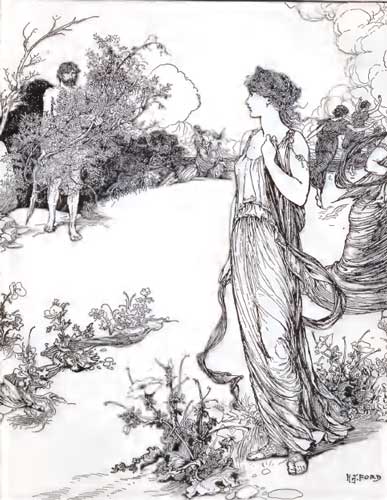As an educator, this gives me certain grounds for pause. I am very much imbricated in this industrialized, machine-like system based on a twisted, out-dated version of Enlightenment ideals. But not passively. This is what I do to change the educational paradigm, one class session at a time.
As I've discussed earlier, posing questions to my students is a cornerstone of my teaching technique. Some find this off-putting and even hostile, at least a first, but I also make it clear that students can pose me questions. In fact, I encourage and sometimes even require it. Class sessions are regularly punctuated with "Avez-vous des questions ?" (Do you have any questions?) and I always do my best to respond meaningfully to those questions. Some times these are "teachable moments," either a particular problem that lets the class and instructor explore a concept together or a bridge to new information.
For instance, a recent session started with the question "Que feriez-vous avec mille dollars ?" (What would you do with a $1000?). The main objective was to allow students some personalized time to express their wishes and use the conditional mood. In response to this question, one student stated they would buy an iPad with a special case. But how do you say "case" in French? There are dozens of ways, and they're pretty context-dependent. But this was a perfectly teachable moment. I opened WordReference and with the class we started sorting through the possibilities. Way down the page, eureka!
| case | n | (sheath) | étui nm |
| Put your glasses back in their case. | |||
| Remets tes lunettes dans leur étui. | |||
I never flinch from admitting I don't know an answer; it's always a springboard to a "Let's find out!" moment. (Or, at the very least from a "Why don't you look that up and share your findings with the class?" moment.)
More than that, one of my very first lessons with students of any level is how to pose questions in French. Class is often a chorus of Comment dit-on ...? (How do you say...?) and that's okay. I really love it when students begin asking Pourquoi? (Why?) and Mais comment...? (But how...?)
Have Fun (and Be Creative)
Critical (self-)reflection is an effective teaching tool, but all work and no play makes Noah a dull prof. Moreover, students are more than just cogitating machines; they have feelings, like anxiety and pride, and they enjoy being entertained. I work hard to have fun in class. Some times this is a simple as making an slightly off-color joke. ("Automobile traffic" in French is la circulation - like in your veins; but le trafic refers to drugs. In our lessons about cars, many student unwittingly complain about the local drug trafficking problem on campus.) Some times this is out-and-out games, like Simon Says, or Jeopardy! Mostly, I seek to create an atmosphere that encourages students to relax and therefore feel free to make mistakes.
You read that right, I want my students to screw up. Because mistakes are the beginning of learning. Every one messes up; the key is what you do next. In a positive, structured atmosphere like the one I try to create in my classrooms, mistakes are acknowledged but more so are corrections. I try to keep the former to a minimum, a cocked head (like a puppy), a half-breathed "Euh...?", a simple prompt to indicate "That's not quite right..." But corrections are praised, and loudly. I applaud; I laugh; I constantly give thumbs up.
Related to fun, creativity and personalization play an important role in my courses. The ability to express your own meaning, even simply, in a foreign language is quite an achievement. To accomplish this, I seek to find the right balance between structure (often, prompting questions) and open-ended tasks. My students interview each other a lot. (There's that posing questions thing again.) Last unit, one class wrote letters to the president of the university suggesting what kind of building we should construct next on campus; presently, I have another class writing reviews of a panoply of Francophone movies, many of which I've never seen before. Last summer, students created guided tours of Francophone destinations and crafted websites to promote them.
Which leads me to the last point:
Make Connections
For me, the pinnacle of education is the ability to make meaningful connections between people, cultures and various fields of inquiry. It's more than just getting your classmate's email address, or learning about why the French tend to have smaller cars than Americans. That's just information, trivia, just the beginning of wisdom. What I really want to see is a student create a third space that bridges the gap between two cultures. To explain to a French person why our American cars are so big and why we take them everywhere, to adapt a French poem for an American audience, to overcome misunderstanding with patience and a will towards compromise. To be more than aware, to be inquisitive, to be creative: to change the paradigm.












